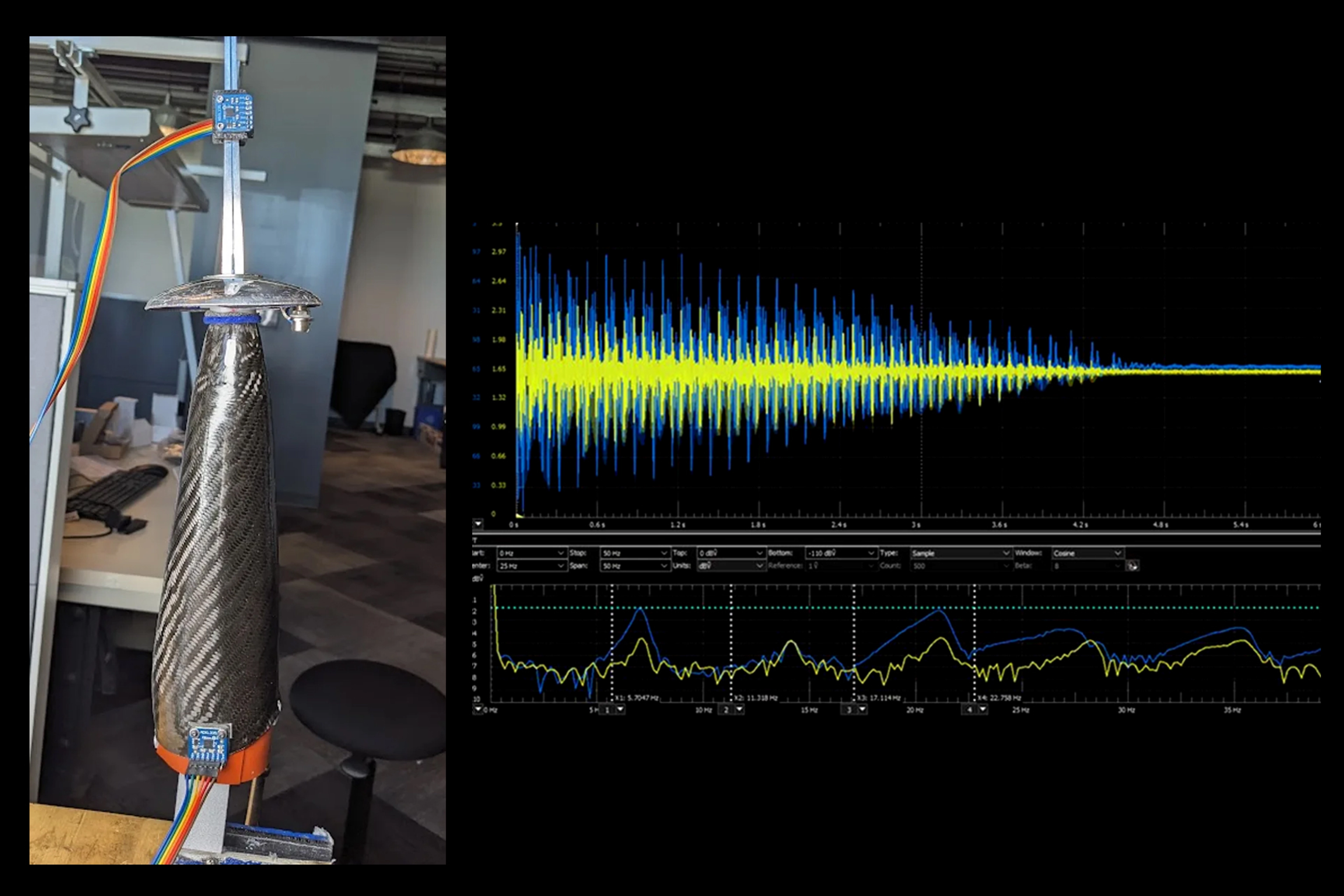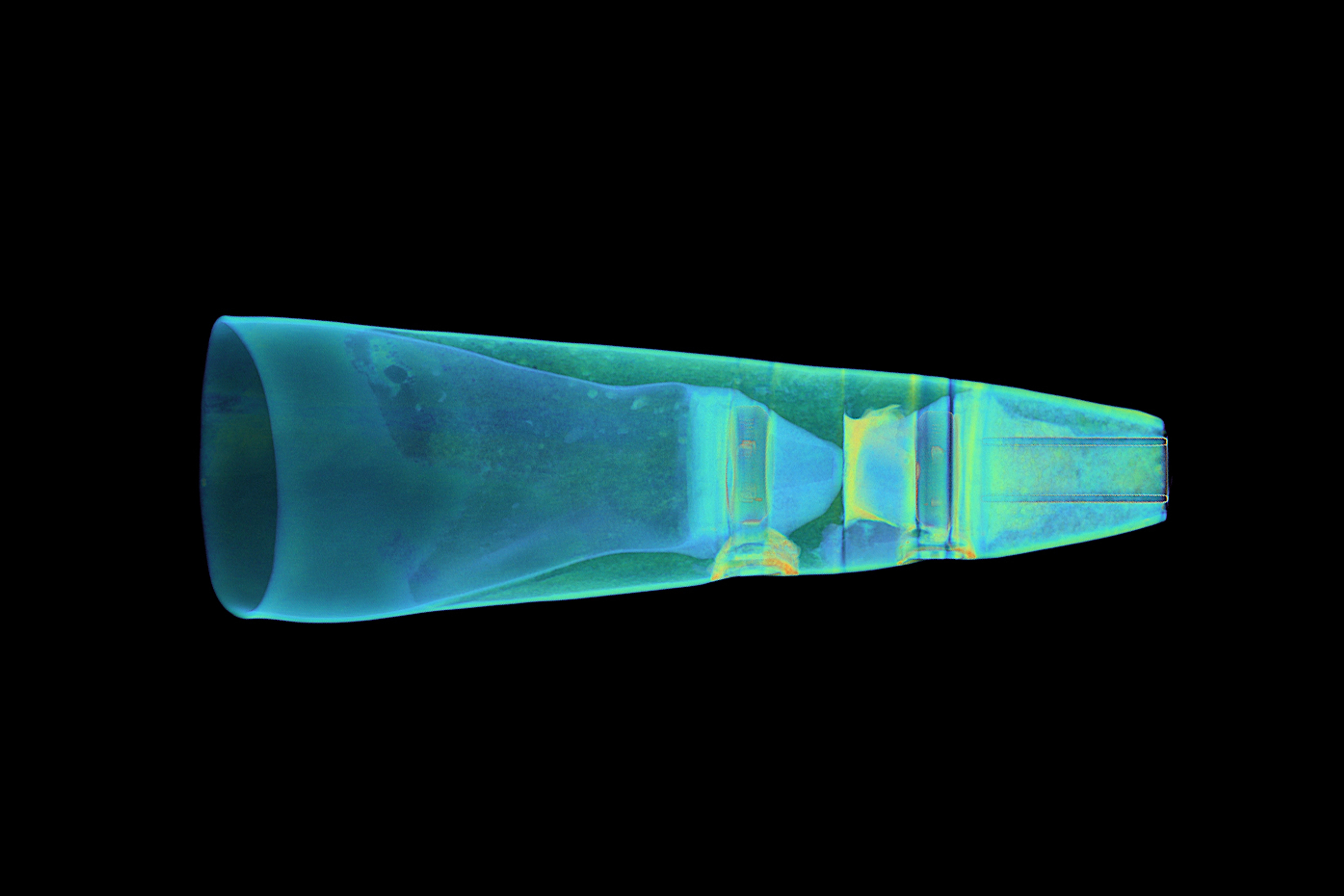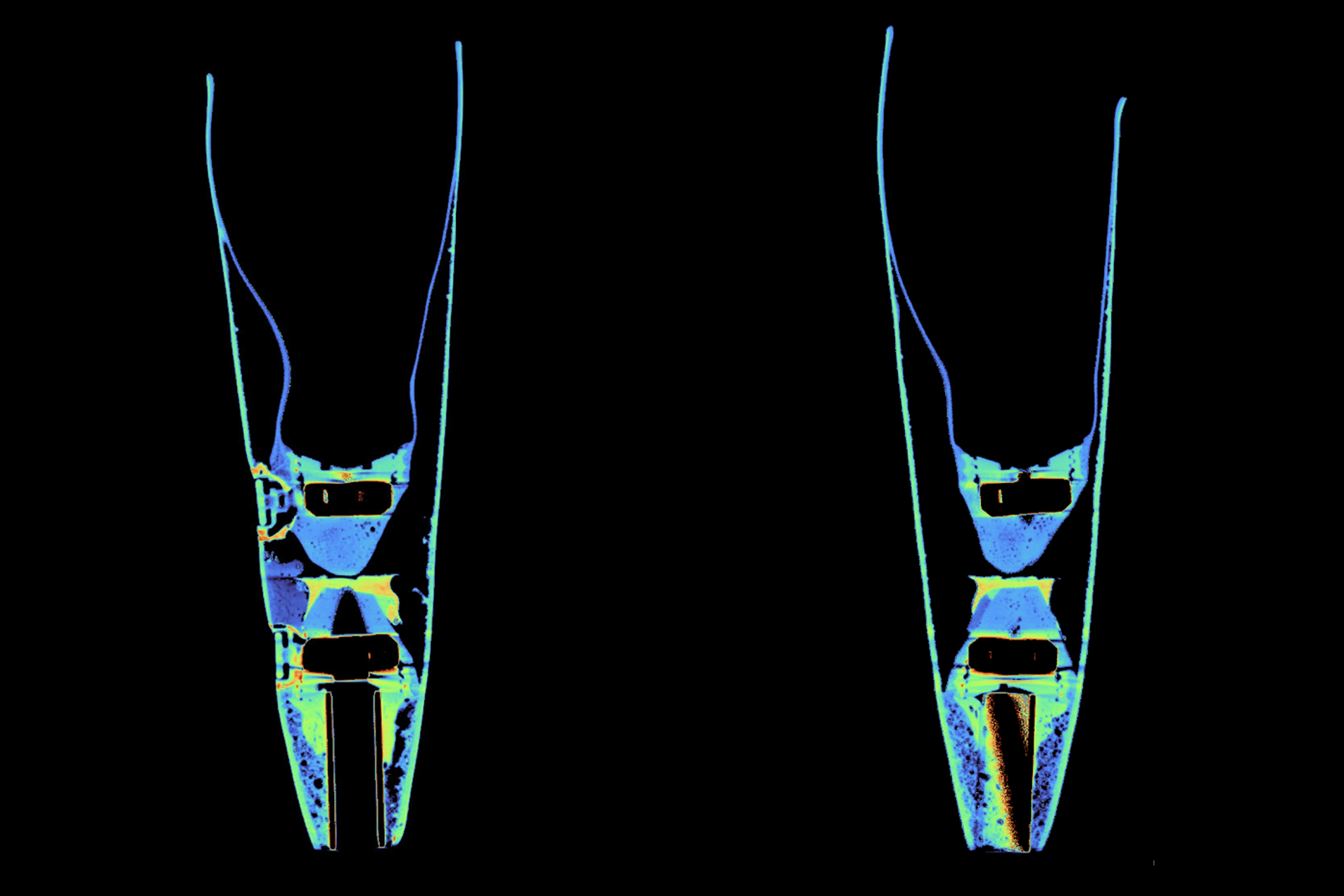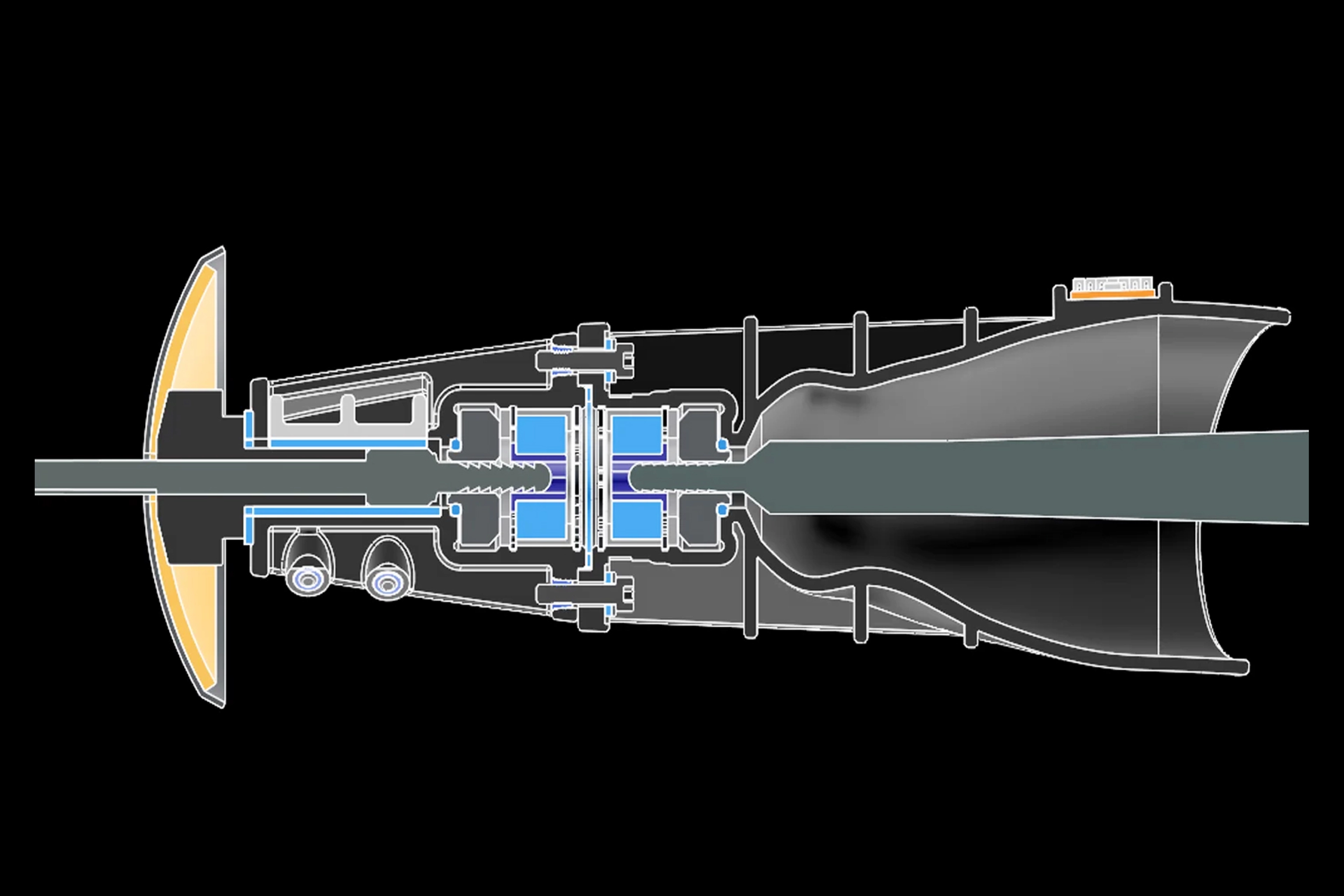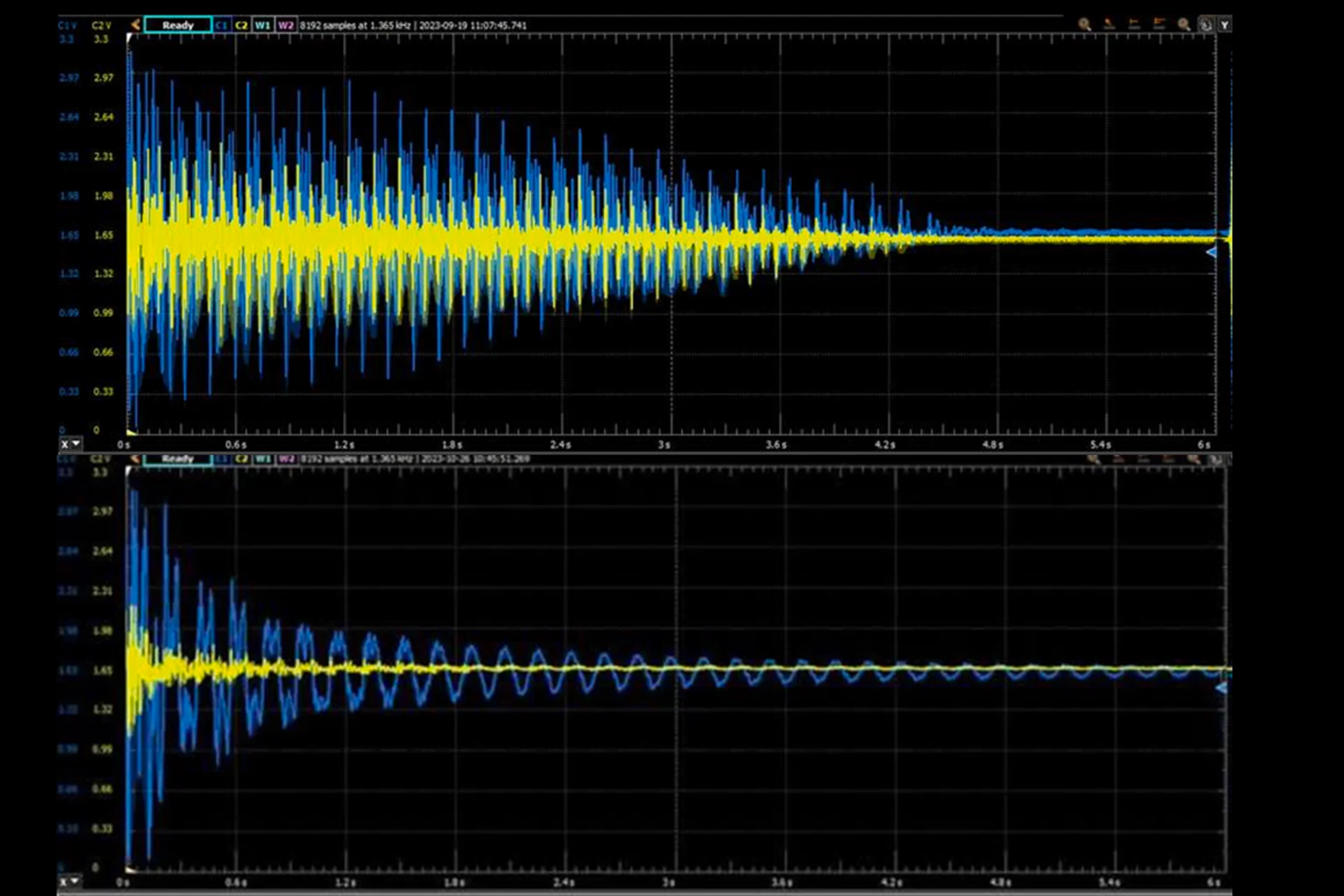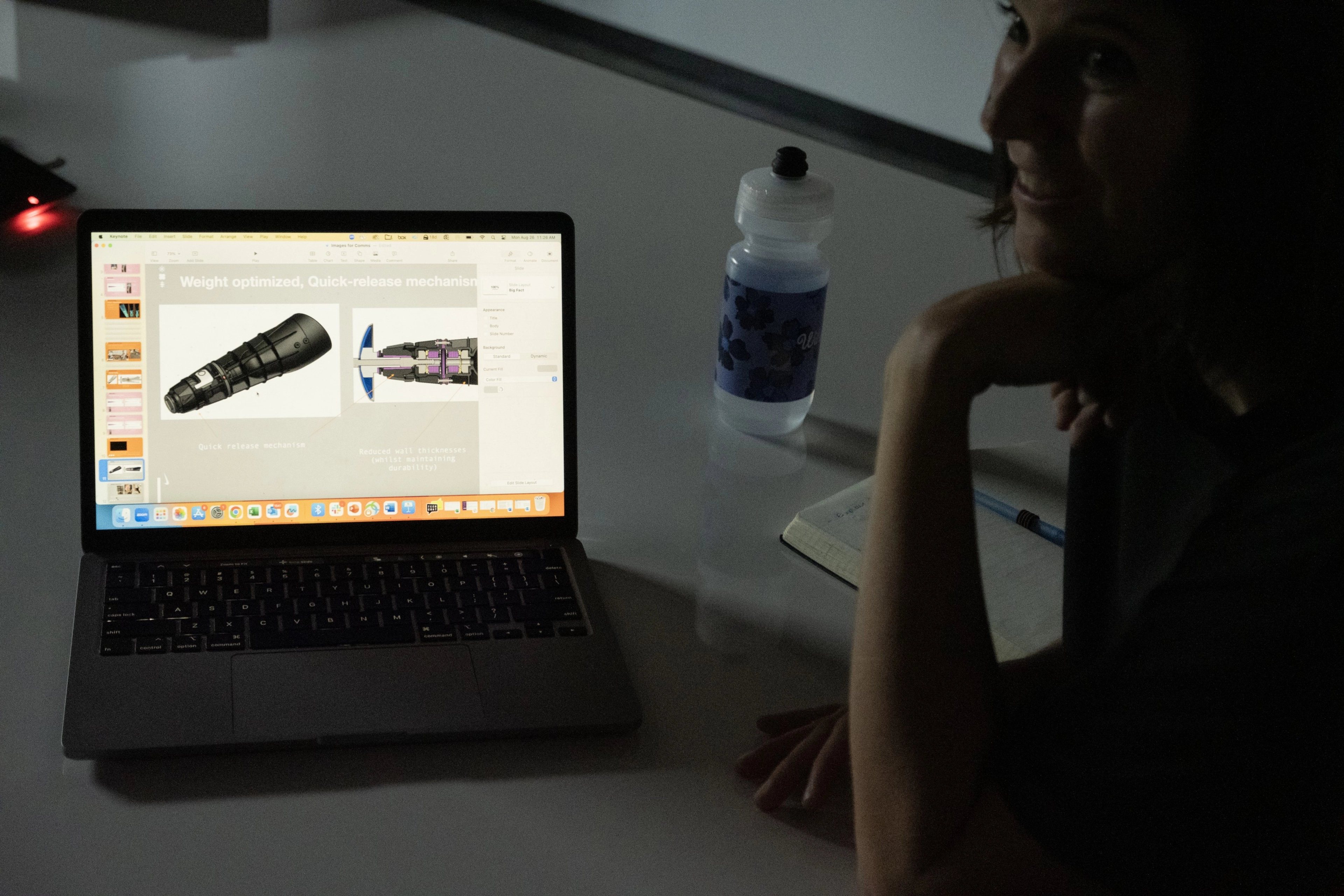Matching Bebe Vio to Her Ultimate Fencing Tool
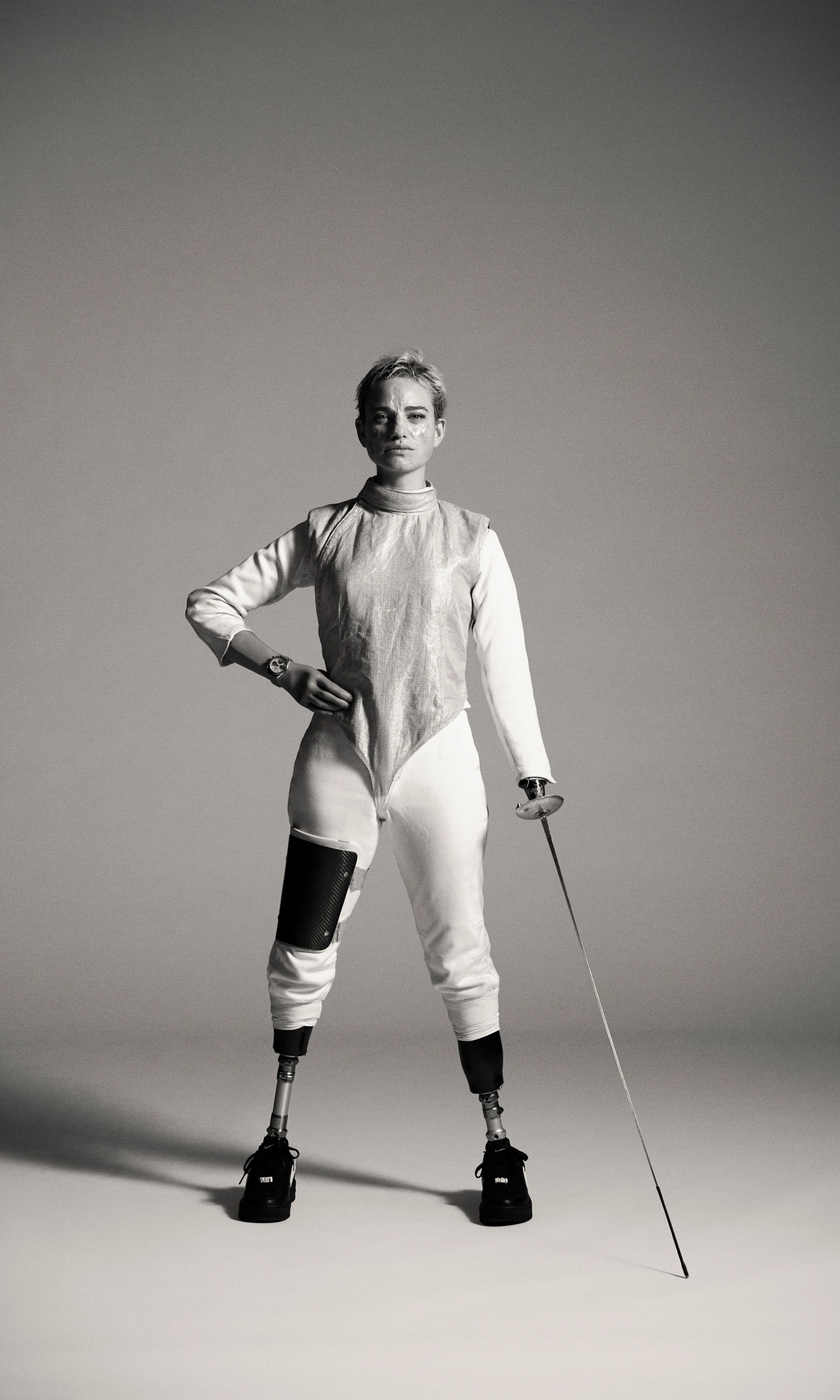

- September 12, 2024
In her wheelchair, Italian fencer Bebe Vio lunges forward toward her opponent, pivoting from her hips to gain leverage, her prosthetic forearm slicing her steel fencing foil across space and finding a target smaller than a penny. For Bebe, this symbiosis between her body and her equipment had been a perfect pairing. But a plaguing pain in her arm was growing so unbearable, after competitions, Bebe would commonly need to take two-week breaks to recover before returning to training. Doctors told her she might need to stop fencing altogether otherwise she could inflict permanent damage to her body.
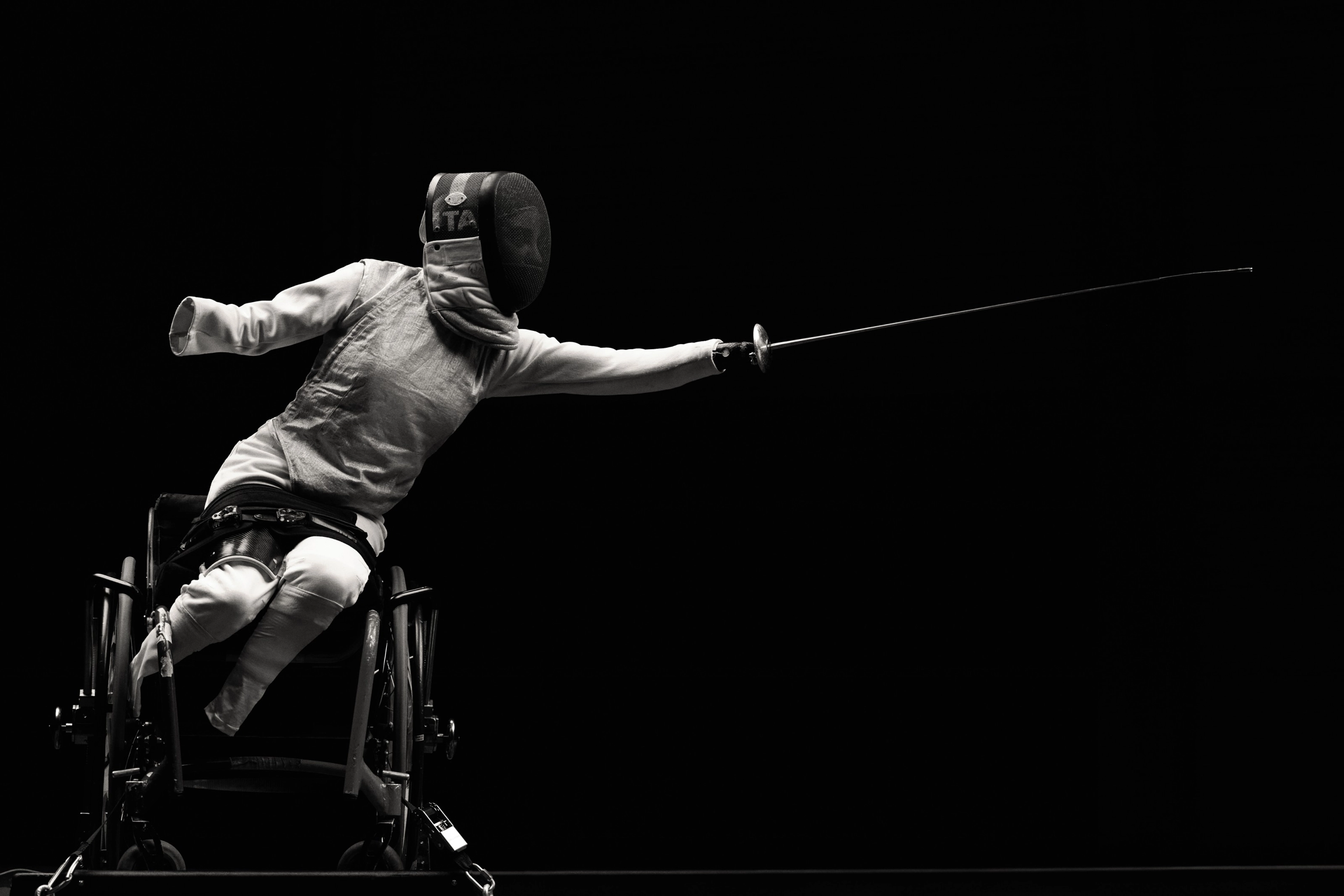
Few athletes have as symbiotic a relationship with their gear as Bebe does with her prosthetic.
The world champion fencer had visited Nike during a 2022 cohort gathering for Athlete Think Tank, an annual summit of the world’s top female athletes to talk about how Nike can serve women more completely. An offhand conversation between her and Tobie Hatfield, Sr. Director for Nike’s NXT Space innovation team, was the trusted space where Bebe opened up about the mysterious problem. Hatfield knew his team was uniquely suited to help.
“Whenever Bill Bowerman designed something for his athletes, he liked to quote the proverb, ‘Necessity is the mother of invention,’” says Hatfield. “At Nike, we’ve added to that phrase: ‘Ultimate necessity is the mother of invention.’” In addition to creating solutions that benefit everyday athletes at a large scale, Nike also fulfills this mission by solving for the most specific, one-to-one needs for its athletes, he explains. “Even if a product doesn’t go to market, the insights we learn inevitably serve all athletes. And we saw a tremendous opportunity with Bebe to serve an ultimate need to continue her storied career."
The first goal was to understand the root of Bebe’s pain. Hatfield and his team in the LeBron James Innovation Center, which included Nike Lead Mechanical Engineer Lucie Browning, studied Bebe’s competition footage intensively to hypothesize where the pain was coming from. Though fencing is a picture of grace and precision, it is also a collision sport. In Bebe's chosen discipline of foil fencing, vibrations that were generated by foil on foil contact during competition and in training were shooting up Bebe’s prosthetic and into her arm, causing sharp, acute pain.
What was happening? Maybe it was the result of a long career of repetitive motion, starting to break her body down with the accumulation of all those foil vibrations. Or maybe it was the blunt force of those repeated strikes. Maybe it was both.
“Whenever Bill Bowerman designed something for his athletes, he liked to quote the proverb, ‘Necessity is the mother of invention.’ At Nike, we’ve added to that phrase: ‘Ultimate necessity is the mother of invention.’”
Tobie Hatfield, Sr. Director Athlete Innovation
Bebe's physiology was a unique transistor to that pain. At 11 years old, Bebe contracted a rare form of meningitis, leaving doctors a small window to amputate both forearms and both legs below the knee to save her life. The nerve endings at those amputated regions are, many years later, still highly sensitive. The effects of the meningitis also left her with low bone density and extra sensitive skin. Her tough-as-nails constitution is even more impressive, given how she withstood this chronic pain for years of elite competition and training. Whatever solution the Nike innovation team created had to find a harmonious balance between Bebe’s unique anatomy and the demands of her sport.
In the summer of 2023, Browning and her team visited Bebe at her training facility in Rome to better understand the problem. They asked Bebe to show them the different types of moves she performs to strike an opponent or defend herself, to see all the ways her fencing foil might be contacted and relaying vibrations through her arm and body. The team outfitted Bebe’s foil and her prosthetic with special sensors, and then measured her foil strikes. The engineers learned that Bebe’s pain issue wasn’t a matter of just one specific vibration frequency, but of all the resonant frequencies of the system. If you’ve ever hit a foul ball off a baseball pitch where the ball hits the knob of the bat, you know the feeling. It's the shiver that runs up your hand, your entire arm, and through your shoulder. That’s similar to what Bebe was feeling over and over again as her fencing foil connected with her opponent’s.
Now that the problem was clear, the next goal was specific: reduce the foil vibrations reaching Bebe.
“When we began problem-solving, we didn’t set out to make a completely new prosthetic,” says Browning. “It was important to adapt whatever we made to work with Bebe’s existing equipment, so she didn’t need to make too many changes all at once.” Browning explains that Bebe’s foil blade is regulated by her fencing federation, so it couldn’t be changed.
Behind the hilt of the foil, however, where there would usually be a handle, Bebe was allowed a custom connector to join her fencing prosthesis directly to her foil. That customization is what enables her to fence without a hand. In fact, Bebe is the only athlete in the world who fences with a forearm prosthesis. It was Bebe’s father — an engineer himself — who created her original system that enabled Bebe to continue fencing after her meningitis. Bebe is now so familiar with her fencing prosthesis and her control of the fencing foil, it feels like she’s using her own hand.
“The weight of the new prosthetic we built, its composition, the way it travels throughout space — it had to match what Bebe was used to,” Browning says.
“When we began problem solving, we didn’t set out to make a completely new prosthetic. It was important to adapt whatever we made to work with Bebe’s existing equipment, so she didn’t need to make too many changes all at once.”
Lucie Browning, Lead Mechanical Engineer
To accurately measure vibrations, the Nike team mounted accelerometers near the base of Bebe’s foil blade and at the elbow-end of her prosthetic. Fixed positions for those sensors ensured the vibrations could be registered in a repeatable way — critical for comparing different sets of data. Next, the team asked Bebe to perform a series of foil strikes to collect data to compare the signals. The larger the amplitude of vibration, the more it registed on the accelerometer. And the greater the difference between the incoming vibrations (what came in through her foil) versus the outgoing vibrations (what transferred through her prostethic to her arm), the smaller the impact to Bebe’s body.
“Ultimately, the goal was to create a significantly smaller vibration signal — ideally zero — at the elbow-end of her prosthetic,” Browning says. “This would mean the team had successfully limited the vibrations reaching Bebe.”
The team considered two solutions: Dampen the vibration energy shooting from the foil up to Bebe’s arm, or, isolate her foil from her prosthetic — essentially separating her from the painful vibrations.
With those options in mind, the engineers set out to modify Bebe’s prosthetic. But with only the original device to work from, they’d need to build replicas for testing. They took a CT scan of Bebe’s prosthetic using specialized equipment in the LeBron James Innovation Center, allowing the team to precisely match the internal geometry of her prosthetic. This gave the team confidence that Bebe would be able to connect to and wear the Nike prototypes immediately, in the exact way as her original, but with less pain.
Over nearly two years and five different prototypes, the Nike innovation team homed in on the ideal solution — a combination of dampening and isolating technologies. Using 3D-printed nylon as a base material for prototyping unlocked an ability to build, test and iterate quickly. The engineers also brought a new approach to the overall architecture of the prosthetic-foil interface. By splitting the prosthetic up — separating the end which joins to the foil, from the end which joins to Bebe’s body — the team could test many more dampening interventions than if the prosthetic was a single object.
The prosthetic’s final design, which the group presented to Bebe in early 2024, was the team’s most effective solution at both dampening vibration energy and maintaining Bebe’s control of her foil. The Nike team had added silicone and silicone-based material at every place where the parts of the prosthetic connected together — the locations through which vibrations had to pass in order to reach Bebe. The new dampening material helped reduce the vibrations reaching Bebe. A newly added clamp at the connection point between the prosthetic and the foil created a more controllable system, helping Bebe to translate her movements more efficiently and precisely.
And the results were looking good. The new prosthetic surpassed Bebe’s original prosthetic in every objective measurement test. Most important, the vibration transmission was significantly reduced. In the new prosthetic, Bebe received at least 50% fewer of the vibrations passing through her foil and new prosthetic as compared to her old set up.
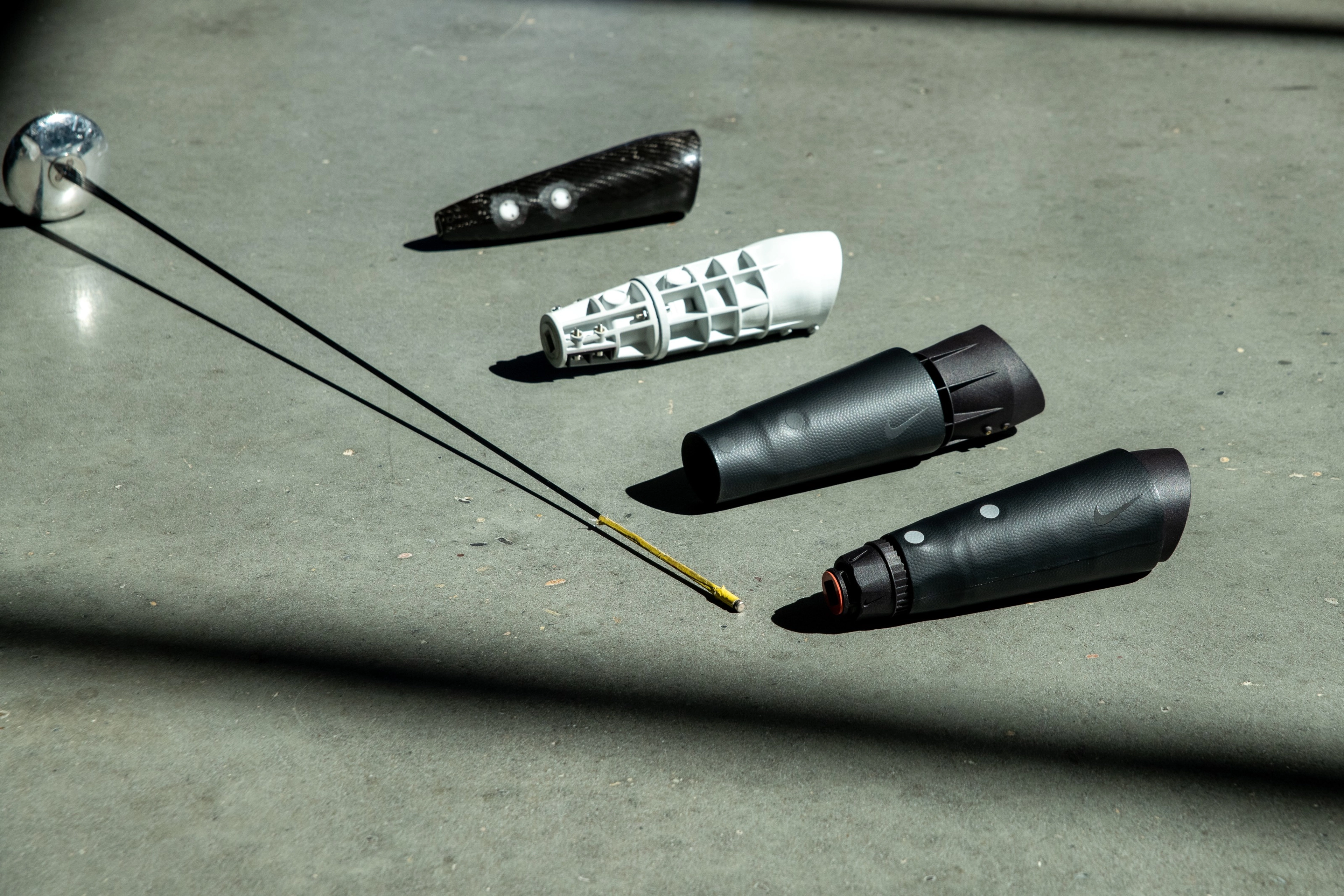
At top, Bebe's original prosthetic, and three iterations of Nike prototypes, arriving at the final design at the bottom.
Of course, the ultimate verdict had to come from Bebe herself. She donned the prototype and took it through its paces. “Bebe was interested enough in that new design that she wanted to take the prosthetic back home to Italy and start training with it to see how her exposure to vibration would be different over an extended period of use,” says Browing. “The good news was that she found it did reduce her pain during and after training.” That prosthetic is essentially the same version Bebe’s used this summer, with a few tweaks and improvements as she’s given the Nike team feedback.
“When we listen to our athletes and innovate for their ultimate needs, desires and aspirations, that's when we do our best work."
Tobie Hatfield, Sr. Director Athlete Innovation
The new prosthetic has transformed into an essential piece of Bebe’s athletic identity. Part of that identity is being at the top of her game for as long as possible, which harks back to the core need that started the Nike design process two years prior, when the pain shooting down her arm threatened her career altogether. Bebe didn't just need her new prosthetic for the here and now. She needed it for the long haul, a tool that could keep up with her tireless aspirations to keep training, competing, and winning.
That challenge to find personal solutions for the most audacious of problems, says Hatfield, is where all good product design begins.
“When we listen to our athletes and innovate for their ultimate needs, desires and aspirations, that's when we do our best work."
